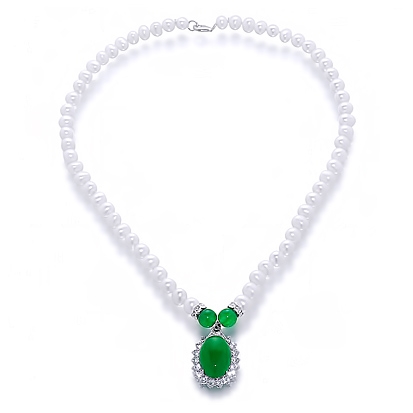A lot of people have an image in their heads of what a pearl looks like, but you may be surprised at the amount of diversity within the name. Pearls are created organically; they grow inside Molluscs, specifically some of those in the Bivalvia class, which includes clams, oysters, cockles, mussels and scallops. They are formed by layers of calcium carbonate, which builds up into nacre, a natural, lustrous substance which is the ‘heart’ of the pearl.
Pearls can either be natural or cultured pearls, both of which form in oysters naturally. When an external irritant like a grain of sand finds its way into the oyster, the animal creates layers of nacre to protect itself and coat whatever has breached its shell. This eventually leads to the pearl itself being formed. The main difference between natural and cultured pearls is that natural ones form their shape and lustre, unsurprisingly, totally naturally. Cultured pearls on the other hand are helped by humans, who insert tiny beads, pieces of mantle tissue (clam flesh) or similar in order to artificially cause the oyster to produce nacre. Using beads to produce the pearl can cause the coating of nacre to become thinner, and thus fade over time. The reason that natural pearls of the same shape and size as cultured pearls are so much more expensive is simply because they’re rarer; the relative ease with which cultured pearls are made makes them much better value than natural ones.

The vast majority of pearl jewellery on the market is made from cultured pearls, regardless of their specific origin. Natural pearls are very rare on the market nowadays and many of the ones that are there are of very low quality. There are several different classifications for the origins of pearls (which we will discuss another time), but for now we will look at how pearls are evaluated, according to the GIA (Gemological Institute of America).
There are 7 ‘Value Factors’ that affect how valuable a pearl is, so bear these in mind next time you go shopping for a pearl necklace!
Size: Pearls are measured in millimetres, and while you might expect a larger pearl to be worth more than a smaller one, this is not always the case, as it is perfectly possible to find large, low-quality pearls, or small but very high quality ones. This is because the smallest pearls require miniscule holes drilled in them, which is extremely delicate and potentially wasteful work, leading to small pearls potentially being very expensive. In general, size relies mostly on the other factors in terms of how it affects the price of pearls.
Shape: When people think of pearls, they usually think of them as being round, but there are plenty of shapes that pearls can be, including: round, near round, oval, button, drop, semi-baroque and baroque. Regardless of its shape, if a pearl is symmetrical, it will be more valuable than one that is not.
Colour: Colour is fairly self-explanatory, but there are some less obvious things to consider. There’s the pearl’s dominant body colour, the overtone, any colours that seem to reside inside the pearl and even colour changes when the pearl is moved in the light. Fresh water pearls, which are Orchira’s specialty, have the widest range of possible colours, ranging from a natural pink, to purple, peach, white or even gold.
Lustre: The lustre of a pearl is the intensity of the light reflected from the surface or just under the surface of the pearl. High lustre will make a pearl shine and gleam, whereas low lustre will make it dull. Naturally, high lustre pearls are more valuable.
Surface: A completely ‘clean’ pearl (one without any irregularities such as abrasions, bumps, chips, cracks and so on), is very rare. Therefore, the ‘cleaner’ a pearl’s surface, the more it is worth.
Nacre: The thickness of the nacre that forms the pearl is also important, as those with thicker nacre are more durable and generally have higher lustre, thus making them more valuable.
Matching: Finally, if multiple pearls are together in a pearl necklace or similar, the uniformity of their appearance is referred to as matching.

We hope that this brief introduction into the world of pearls has helped you get a better understanding of what makes a pearl. Given the wide variety of beautiful pearls, it can be quite daunting for buyers, especially if they don’t know what a lot of the terms mean. Now that you know better, why not check out our fantastic selection of pearl jewellery?